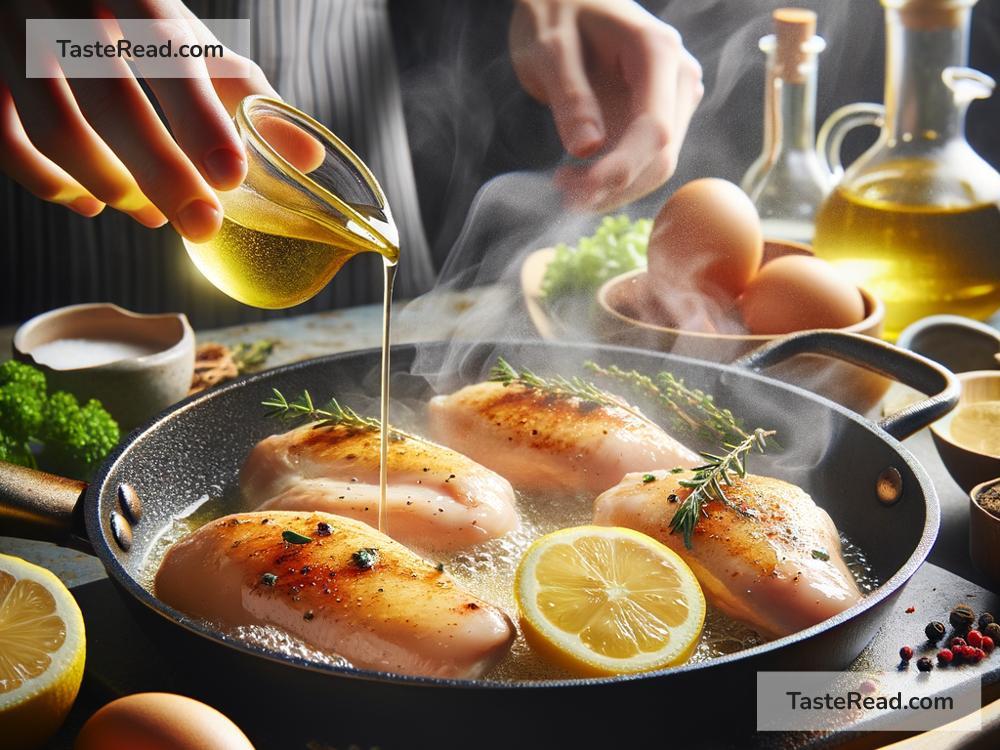The Science of Protein Denaturation in Cooking
Cooking is not just an art; it’s also a science! Every time you cook eggs, grill steak, or bake bread, you’re triggering fascinating changes in food molecules, especially proteins. One of these changes is called protein denaturation. If you’ve ever wondered what makes an egg turn solid or why your steak changes color as it cooks, the answer lies in this process.
Protein denaturation might sound like something out of a science lab, but it’s a natural process that happens in your kitchen every day. In this article, we’ll explore what protein denaturation is, how it works, and why it’s essential for cooking delicious food.
What Are Proteins?
First, let’s talk about proteins. Proteins are important molecules found in both plants and animals. They’re made up of smaller building blocks called amino acids, which are linked together in long chains. These chains fold into specific shapes, giving proteins their unique structures and functions.
In food, proteins provide texture, structure, and nutrition. For example, eggs contain lots of proteins, which are key to their ability to firm up when cooked. Meat proteins contribute to its chewiness, and gluten proteins in flour help give bread its structure.
What Is Protein Denaturation?
Proteins are like tiny machines. Their 3D folding determines how they work. However, when you cook food or expose it to certain conditions, these proteins can change. Denaturation is the term scientists use to describe what happens when proteins lose their original shape.
Imagine proteins like balls of yarn that are carefully folded and tied. When exposed to heat, acid, salt, or other chemicals, the “yarn” starts to unravel. Once proteins are denatured, they can’t go back to their original shape. This change is permanent.
How Does Protein Denaturation Occur?
Several factors cause proteins to denature during cooking. Here are the most common ones:
-
Heat: The most common way we denature proteins is by applying heat. When you fry an egg or grill a steak, the heat breaks the bonds holding the proteins’ structure. This is why eggs turn from slimy and see-through to firm and white when cooked. The proteins in the egg unravel, then reattach to form a solid network—a process called coagulation.
-
Acid: Acid can also denature proteins. For example, adding lime juice to raw fish in dishes like ceviche changes the fish’s texture, as the acid “cooks” the fish by breaking down its proteins. Yogurt and buttermilk, both acidic, can tenderize meat for the same reason.
-
Salt: Salting food can cause proteins to denature too. Salt interacts with proteins to change their structure and make them easier to coagulate. You’ll often see this when curing meats or mixing salt into dough.
-
Mechanical Action: Whipping or kneading can also denature proteins. For example, when you whisk egg whites, the mechanical force unfolds the proteins and lets air get trapped inside, creating fluffy foam.
Why Is Protein Denaturation Important in Cooking?
Protein denaturation is a crucial part of cooking because it changes the texture, flavor, and appearance of food. Here are some everyday examples:
-
Cooking Eggs: When you cook an egg, heat causes the proteins to unravel and bond together into a gel-like structure. This is why boiled or fried eggs become firm, making it easy to enjoy them in salads, sandwiches, or breakfast dishes.
-
Cooking Meat: When you grill, roast, or sauté meat, heat denatures the proteins. The proteins coagulate, making the meat firm. The color changes too—rare meat is red because some proteins, like myoglobin, haven’t fully denatured.
-
Making Bread: Kneading dough develops gluten, a protein in flour. This creates stretchy dough that traps air bubbles, letting it rise during baking. Heat denatures the gluten, setting the bread’s structure and giving it a chewy texture.
-
Making Cheese or Yogurt: In cheese-making, milk proteins like casein are denatured by heat, acid, or enzymes, causing them to curdle. In yogurt, bacteria produce acid that denatures protein and thickens the milk.
The Role of Temperature
Understanding protein denaturation can also help you avoid cooking mishaps. For example, overcooking meat can make it tough because heat causes the proteins to shrink, squeezing out moisture. Similarly, overheating egg-based sauces like custards can cause curdling because the proteins coagulate too tightly.
Cooking at the right temperature ensures proteins denature in a controlled way, resulting in tender meat, silky sauces, and perfectly cooked eggs. This is why recipes often specify precise cooking times and temperatures.
Conclusion
Protein denaturation is one of the most important scientific principles behind cooking. Heat, acid, salt, and mechanical action all play a role in transforming the structure of proteins, giving food new textures and flavors. Whether you’re frying eggs, baking bread, or grilling meat, denaturation is what makes your food delicious.
Next time you’re in the kitchen, remember that you’re doing science while you cook. Understanding concepts like protein denaturation can help you be a better cook—creating meals that are not just tasty but also perfectly prepared! So go ahead and explore the wonders of cooking, one denatured protein at a time.
Bon appétit!


